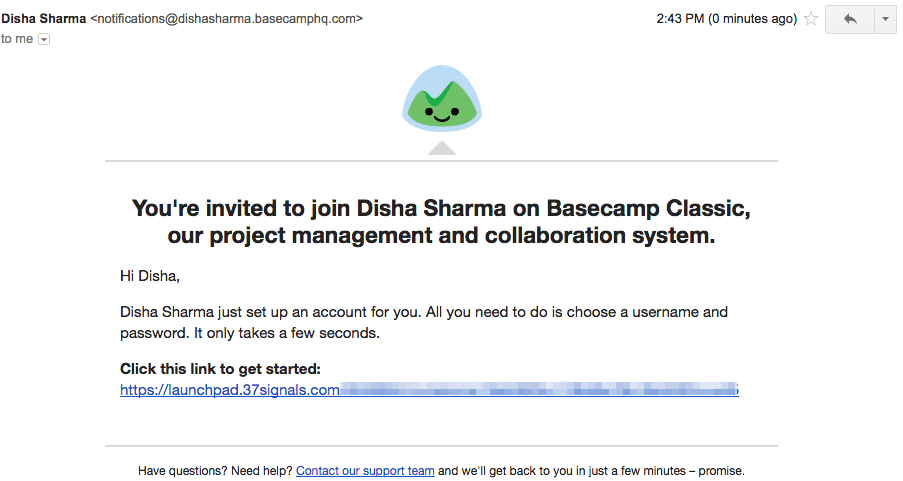
Looking for ways to improve your client onboarding process?
Client onboarding is the process in which new clients are better equipped with knowledge, understanding, and the tools needed to be a good client.
Onboarding new clients is a lot like onboarding new employees.”
For example, when you welcome new team members in your agency, you shouldn’t need to discuss pay and job description, because those logistical items should have already been handled.
Likewise, when you welcome a new client, you shouldn’t need to rehash the project scope, set expectations, or discuss payment details.
During onboarding, you need to give your clients more insight into how your agency will work with/for them and how the project will proceed.
For example, you should provide answers to the following four questions:
- Who will I talk to in the agency?
- What’re the best means of reaching out to the contact?
- How can I escalate if I have an issue?
- How frequent will the communication be?
Unlike onboarding users on tools and SaaS services, client onboarding can’t be automated.
In client onboarding, you need to personalize your approach and show the client that you are accessible and that their project has kicked off and is making progress. Communication is at the center-stage of successful client onboarding – and it is also at the core of the client onboarding steps that we recommend below.
1. Send a Kickoff Email to Your Client
An effective welcome email is a cornerstone of a healthy client-agency relationship.
When you craft your first email to the client after being hired for a project, make sure that you keep your email short and address the most pressing questions your client may have at the point (like the ones listed above).
The tone and content of your email will be subjective to the nature of your agency and of the clients you cater to, but the following email template is a good starting point.
Kickoff Email Template:
Hey [client name],
I’m [your name] and I’m a [your title] at [agency name]. I’ll be your contact point going forward.
First up, I’d like to thank you for trusting [agency name] with your business needs. We’re thrilled to have you onboard and excited about offering you our best services.
If you’ve any questions, comments, or feedback, you can reach out to me, and I’ll be happy to talk it through.
Here are my contact details:
Phone:
Email:
IM:
I’m available from ___ to ____ [time zone]. For critical matters, it’s best to give me a call.
[Client name], thanks once again for choosing us. We’re committed to making this work out great for you!
I’ll be in touch with you shortly for any information that we might need for the project. In the meantime, please expect a collaboration request email from [tool name]. We’ll be using [tool] to share the project progress with you. Plus, we’ll update you via weekly email reports. [Give any other details that are specific to your agency’s processes.]
Have a great day!
Best regards,
[Your name]
2. Bring the Client Into Your Work Process or Management Tool
Communication and collaboration with a client are essential for a robust client-agency relationship. These factors are crucial to clients even when they’re just screening agencies or making hiring decisions.
If your agency uses a collaboration or project management tool, you can send your client an invite through the tool.
For example, if you use a tool like Basecamp, you can create a new project and send your client an invite via the tool itself. This way, you can introduce them to the virtual workspace of the project. Most project management tools let you invite clients (and control what they can see and access).
Here’s an email that Basecamp sends:
While most project management tools are pretty intuitive, it might help to send a follow-up email to your client offering a quick 10-min call to show them their way around your project management or collaboration tool. This little gesture can further strengthen your relationship with the client.
However, if your client has no interest in using your project management tool, or if your agency doesn’t utilize a tool, then you can simply explain to your client how they should expect to receive project updates in the coming days and be transparent in any necessary steps you need to take on your end (i.e. working with a designer or developer).
3. Update Often
Ideally, as you reach the third step of your onboarding process, you should have some progress to report to the client. It doesn’t have to be anything huge, just enough to show the client that the work has begun.
Here’s a handy template you could send out:
Update Email Template:
Hey [client name],
Hope you’re having a great day!
Just wanted to update you on how the project is coming along. We’ve just started working on the [first project stage (include a few details if you can)]. It’s been going great so far.
We’re hoping to send it for your review by [deadline of the first phase].
In the meantime, if you’ve any questions or would like more updates, just let me know, and I’ll be more than happy to give you a quick response.
Would be great if you could reply to this email – just so we know that you haven’t missed it.
Best regards,
[Your name]
You can change the above template and use it throughout the length of the project to keep them updated at every stage. Once the update email from the last step is sent (and the response has been logged away), your client is successfully onboard!
When Client Onboarding Needs More
Depending on the nature of your services, you may need to ask for more details during the onboarding stage. If you feel that a certain onboarding step is fairly involved – like one in which you have too many questions, ditch the email and go for a call instead.
A 30-minute call would be much better than a 30-email deep conversation thread (over a span of a week) in such cases.”
Client onboarding doesn’t have to be a complicated process. All you need to do is to explain to the client how you both will work together.
If you don’t have a client onboarding system in place, you miss out on a great chance to show the clients that you care about them and their business.
An effective onboarding process can set the foundation of a successful client-agency relationship. You can develop a great one for yourself by tweaking the above sequence.
Need More Help With Project Management?
Get the basics of a rock-solid project management system to help keep clients happy without working 22-hour days.
[ad_2]
Source link






